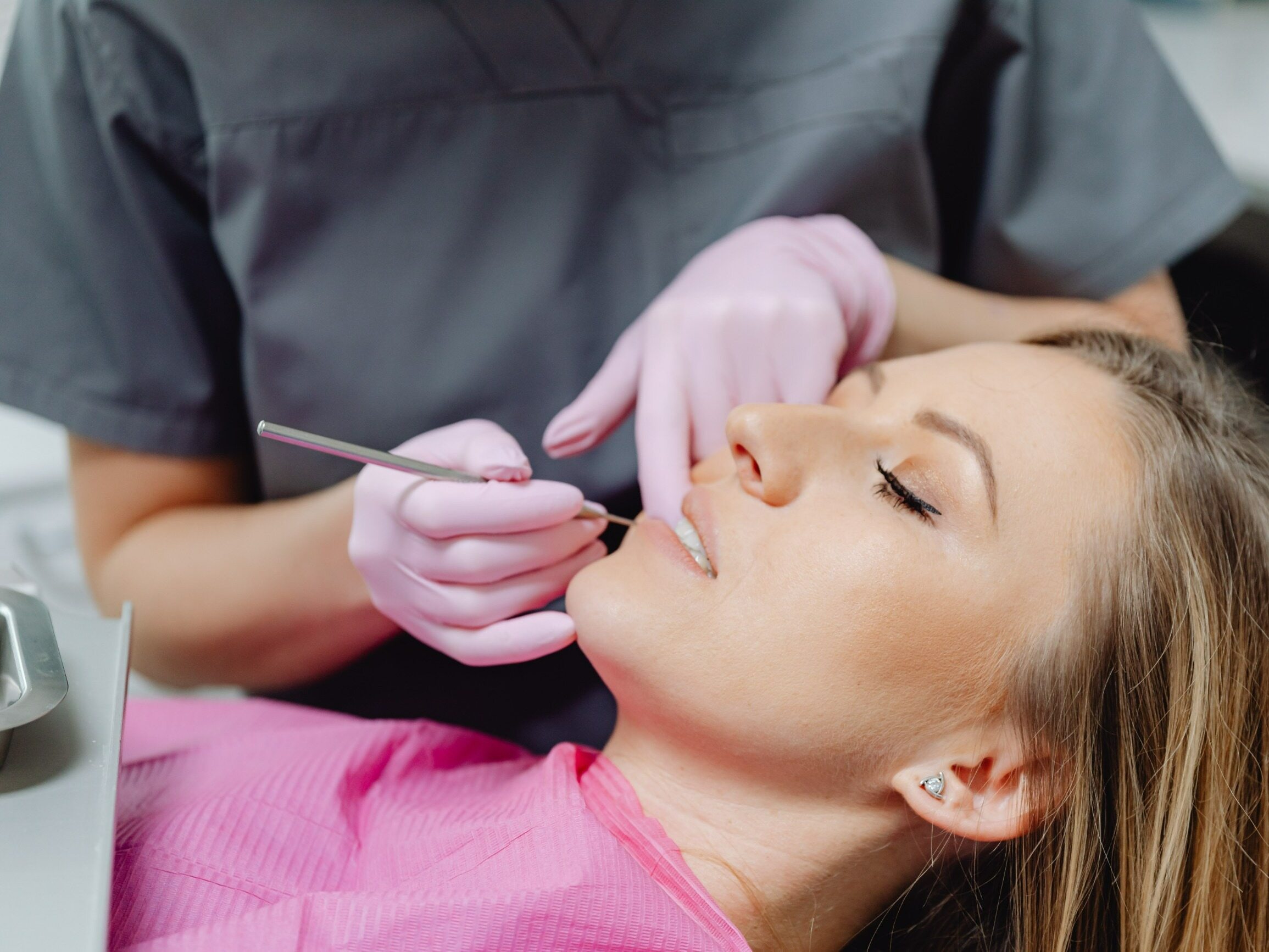Tooth hypersensitivity – causes, symptoms and treatments

Tooth sensitivity is a common dental problem that requires appropriate treatment. The disease causes severe pain when exposed to exposed dentin and dentinal tubules, among others. thermal stimuli. See what are the common causes of tooth hypersensitivity.
- Causes of tooth hypersensitivity
- Symptoms of tooth hypersensitivity
- Ways to treat tooth hypersensitivity
Tooth hypersensitivity should prompt a visit to the dentist’s office because it is often associated with, among others: with progressive erosion of tooth enamel, which increases the risk of developing caries. If, under the influence of thermal stimuli, as well as sweet, spicy, sour and cold foods and drinks, acute pain appears around the tooth, it is necessary to undergo a dental examination to detect the cause of tooth hypersensitivity.
Tooth hypersensitivity causes very unpleasant symptoms. Although it is possible to reduce the associated pain using a specialized toothpaste, in many cases it is not enough to change your care habits. Before you start using home remedies for tooth hypersensitivity, it is worth consulting a specialist. At the dentist’s office, you can get professional advice and help tailored to the cause of tooth hypersensitivity.
Causes of tooth hypersensitivity
Most often, tooth hypersensitivity is caused by:
-
improper oral hygiene, e.g. using very hard toothbrushes, too intensive tooth brushing, long-term use of improperly selected tooth whitening pastes;
-
gum and periodontal diseases, e.g. gingivitis and periodontitis;
-
damage to the tooth enamel around the tooth neck – enamel erosion is promoted by, among others, drinking carbonated drinks, grinding teeth (bruxism), as well as gastroesophageal reflux and eating disorders (vomiting associated with bulimia);
-
nail biting, which may result in tooth wear and micro-damage to dental enamel;
-
malocclusion.
Dentin hypersensitivity may also be associated with progressive caries and other diseases that develop within the hard tissues of the tooth. Most often, we are dealing with a multifactorial etiology of the disease, which additionally intensifies unpleasant symptoms and makes the treatment of tooth hypersensitivity a multi-stage process.
People suffering from tooth hypersensitivity must not only start dental treatment, but also take proper care of their hypersensitive teeth. In the case of sensitive teeth, it is necessary to use specialized toothbrushing pastes that create a layer that protects exposed tooth necks against high and low temperatures, as well as chemical compounds present in food and drinks.
Tooth hypersensitivity requires, among others, eliminating carbonated drinks, spicy spices, sour foods and sweets from the diet.
Symptoms of tooth hypersensitivity
Symptoms associated with tooth hypersensitivity are quite characteristic. These include:
-
toothache or dental pain that occurs when drinking cold and hot drinks and eating hot and cold foods;
-
pain that occurs as a result of contact with acids, e.g. after eating citrus fruits or other acidic foods,
-
pain caused by touching the tooth area,
-
pain when flossing and brushing teeth,
-
pain when biting and chewing,
-
pain caused by breathing through the teeth.
Hypersensitivity most often affects canines and premolars. It can cause very severe pain that makes it impossible to eat certain foods or drink e.g. coffee, tea or cold water.
Eliminating irritating factors is not a method of treating tooth hypersensitivity – remember that the absence of pain does not mean cure. The process of enamel erosion may progress, leading to the development of caries, so it is worth seeking help from a dentist. The specialist will tailor the treatment to your individual needs and help you choose the right toothpaste and toothbrush. Sometimes specialized treatment is necessary, e.g. for periodontitis, gingivitis or malocclusion. In the case of tooth sensitivity, we may also be dealing with diseases that do not develop in the oral cavity, e.g. gastroesophageal reflux. Teeth grinding is also often a cause of tooth hypersensitivity, which is related to, among others, with chronic stress.
Tooth hypersensitivity rarely occurs without a cause, so symptomatic treatment that is done on your own usually does not bring results.
Ways to treat tooth hypersensitivity
Sensitive teeth require specialized treatment. It is necessary to detect the causes that led to the exposure of dentin and dental tubules. Treatment methods for tooth hypersensitivity can be divided into:
-
home methods – using toothpaste recommended by the dentist, which contains, among others, fluorine and calcium compounds, as well as zinc, potassium and iron salts, using a properly selected toothbrush and using pain-reducing rinses;
-
non-invasive dental procedures – treatment aimed at reducing nerve conduction and closing dentinal tubules;
-
invasive dental procedures – treatment using fillings that are used for severely damaged enamel, covering gingival recessions when the gums are lowered, as well as laser therapy.
One of the most frequently used methods of treating tooth hypersensitivity is tooth varnishing with a special preparation that brings immediate relief. However, the choice of treatment method for tooth hypersensitivity depends on the cause of the unpleasant symptoms.
Importantly, we can prevent dentin hypersensitivity by taking care of our oral health. To properly care for your teeth, you should remember not only to brush, floss and use mouthwash regularly, but also to visit the dentist at least twice a year.
Sources:
-
A. Haładyj, Oral health problems – dentin hypersensitivity in connection with gingivitis, Dentistry after Diploma, 02, 2019
-
J. Zielińska-Zborowska, Paulina Buczkowska-Puślecka, Anna Wędrychowicz-Welman, Marta Mrall-Wechta, Etiology and diagnosis of dentin hypersensitivity – review of the literature, DENTAL FORUM /1/2014/XLII
-
M. Chomyszyn-Gajewska, Increased sensitivity of dentin – contemporary views on prevention and treatment, Dental and Medical Problems. 2009; 46(1), pp. 110–117






